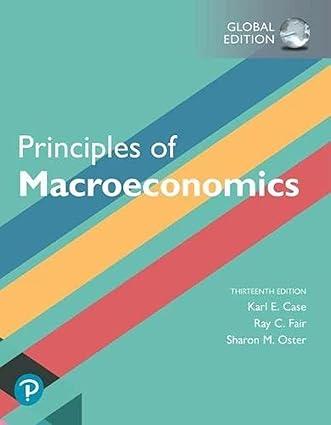Every year West African and Asian-Australian monsoons hit countries like Malaysia, India, Africa, and Australia, resulting in
Question:
Every year West African and Asian-Australian monsoons hit countries like Malaysia, India, Africa, and Australia, resulting in severe floods with a devastating economic impact. In the aftermath of such crises, prices of goods and services in affected industries begin to rise. At this point, you should be able to anticipate which prices are likely to rise the most.
Before the floods, the markets in the countries are assumed to be in relative equilibrium. However, this pre-monsoon market equilibrium is not sustainable after the floods. Businesses that are inclined to increase the prices of their products will see either a large shift to the right or to the left of their demand and supply curves. Extreme weather conditions tend to result in a significant decline in the production of food items and other necessity goods. Farmers and fishermen are forced to avoid choppy seas and, often, have to abandon their homes. Thus, due to fewer catches, the price of seafood soars along coastal regions like the eastern coast of Malaysia. At the same time, vegetable prices and the cost of vegetable oil used by food industries see an even greater price jump due to farmlands and oil plantations being submerged after the floods. This causes food supplies to become scarce while damaged infrastructure limits access to markets. Certain services—pest control, sewage cleaning, water pumping machine rental, potholes repair, and improvised boats—become highly valued. A shift in the supply curve makes higher prices possible in such markets, particularly given the fact that most people who remain in the affected regions really need those products and services!
As suggested in the text, in some cases governments implement price controls during crises. In the aftermath of severe floods, sharp increases in the prices of necessity goods and services is a common phenomenon known as price gouging. To combat it, governments incorporate anti-price gouging provisions into consumer protection acts or emergency management legislation and regulations. In Australia, price gouging is regulated at both the Federal and the State levels through Section 21 on unconscionable conduct in its consumer law.1 However, the law on price gouging is less precise in some African states with armed conflicts and humanitarian aids. Though the extent of price gouging is not easily defined, economic theory can help predict the types of businesses that are liable for such offense.

Question
In what ways can governments reduce the severity of the leftward shift of the supply curve during emergency situations? When would price gouging be considered good within the economics perspective? Should it be legalized? Why or why not?
Step by Step Answer:

Principles Of Macroeconomics
ISBN: 9781292303826
13th Global Edition
Authors: Karl E. Case,Ray C. Fair , Sharon E. Oster





